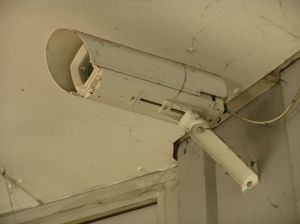A recent study by PriceWaterhouseCoopers found employee theft cost Australian businesses $1 million in 2009, with one in five businesses reporting incidents of employee theft.
In the retail sector it is estimated that 41 per cent of the politely-termed “shrinkage” is down to disloyal employees, according to the Global Retail Theft Barometer, and there is no reason to believe it is any different in the industrial sector.
Australia's reports of employee theft are also considered to be higher than the international average.
These are alarming statistics, particularly when you factor in that many incidents of theft go unreported.
Employee theft has many faces: property theft, such as stationary items in offices and power tools in factories or work sites; over clocking time sheets; stealing company data; and fraud.
It is a problem which reportedly increased as the global financial crisis saw many households tighten their financial belts.
There are, however, prevention methods businesses can implement to prevent employee theft.
"I have found that apart from time theft,the most common type of theft in the workplace by employees are basic small items such as stationary," Grant Dehlsen from Adox Security, said.
"When it comes to the manufacturing and building industries the theft is more likely to involve larger and costlier items, such as power tools and construction materials, more so than a computer or laptop."
Adox Security has worked with business which have used closed circuit television (CCTV) systems as a deterrent to prevent theft and also to help reduce occupational health and safety problems.
CCTV systems can range from basic and economical options to high tech solutions which can cost thousands of dollars.
"A basic system would consist of a four channel digital video recorder (DVR), CCTV cameras and a monitor," Dehlsen said.
"The DVR records images from CCTV cameras to a computer hard-drive in digital file format. The system will receive images from up to four cameras and allow local and remote viewing and the archiving of images."
Video footage can be saved onto a CD disc or USB thumb drive for future reference and potentially used as evidence at a later date if necessary.
"Analogue DVRs come in four, eight and 16 channel configurations, whilst the newer IP based systems can be configured to receive images from almost an unlimited number of IP cameras," Dehlsen said.
He says businesses can expect to pay at least $700 per camera, which can be installed in a standard office area.
"There are many options when installing electronic security devices other than just CCTV systems. For example, electronic access control and intercom systems allow employers to control and monitor the movement of employees and visitors into and through their work place," Dehlsen said.
When it comes to bigger employee theft issues such as fraud, LAC Lawyers says businesses can identify and track employee theft through specialised software which is able to track and report anomalies.
"There are other red flags to look for such as employees who don’t want to take leave, or seem to have a lifestyle out of line with their remuneration."
Ultimately, though, according to Dehlsen: "The cost of theft in the workplace pales into insignificance when compared to employee health and safety and workers compensation fraud."

